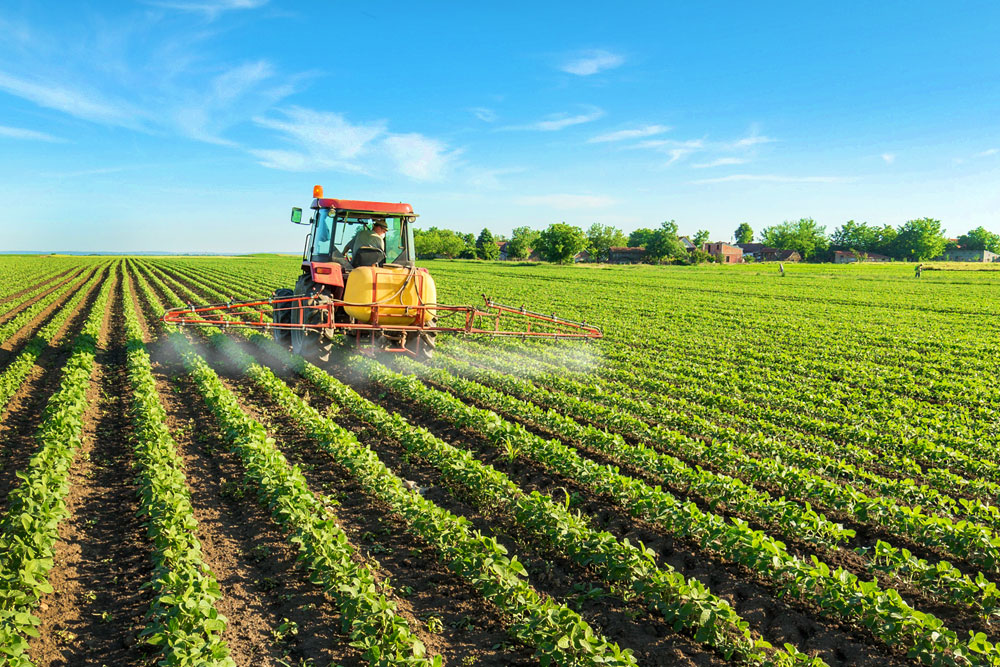Water supplies meeting treatment requirements
Water Treatment & Nitrate
Back to Compare
Nitrate

Summary
- Nitrate contamination is largely caused by fertilizer or manure sources and can cause adverse human health effects
- The maximum contaminant level for nitrate in public drinking water supplies is 10 ppm for both the U.S. and Canada
- Approved methods of treatment for nitrate include ion exchange, reverse osmosis, and electrodialysis
What is nitrate?
Nitrate, a naturally formed compound of nitrogen and oxygen or ozone, can contaminate drinking water and potentially cause adverse human health effects.
Where does it come from?
Nitrate levels in drinking water are largely due to contamination from chemical fertilizer, manure, or human waste. Sources of contamination include septic tanks, animal feedlots, fertilizer inputs, or industrial waste. Drinking water from private wells, especially near agricultural areas, may contain nitrate from fertilizer or animal manure and increase the chances of exposure.
What are the contamination standards?
The maximum contaminant level (MCL) for nitrate in public drinking water supplies is 10 ppm for both the U.S. and Canada.
How is drinking water treated to meet applicable standards?
The EPA-approved methods of treatment for nitrate include ion exchange, reverse osmosis, and electrodialysis. Boiling, mechanical filters, and chemical disinfection are not effective to treat drinking water for nitrate, meaning well users are mainly reliant on reverse osmosis or ion exchange. Reverse osmosis costs between 5-10 cents per gallon and is considered an effective nitrate removal process for polluted agricultural groundwater supplies.
Ion exchange is the process of removing nitrate from pressurized water moving through columns packed with an exchange resin. The resins can only be recharged at special facilities, making ion exchange an expensive option best used for treating large amounts of water. Initial ion exchange unit costs range from $400 and $1,500, and larger facilities can cost upwards of millions of dollars. Some large municipal facilities will use a combination of ion exchange and blending with nitrate-free water to remain below the Safe Drinking Water Standard. However, this requires sources of noncontaminated water, so other facilities utilize reverse osmosis, distillation , or ion exchange in their process. Electrodialysis remains costly and complicated.
References
-
Zaveri, E., Russ, J., Desbureaux, S., Damania, R., Rodella, A.-S., & Ribeiro, G. (2020). The Nitrogen Legacy: The Long-Term Effects of Water Pollution on Human Capital. In The Nitrogen Legacy: The Long-Term Effects of Water Pollution on Human Capital. https://doi.org/10.1596/1813-9450-9143
-
Ward, M. H., Jones, R. R., Brender, J. D., de Kok, T. M., Weyer, P. J., Nolan, B. T., Villanueva, C. M., & van Breda, S. G. (2018). Drinking water nitrate and human health: An updated review. In International Journal of Environmental Research and Public Health (Vol. 15, Issue 7). https://doi.org/10.3390/ijerph15071557
-
Centers for Disease Control and Prevention. Nitrate and Drinking Water from Private Wells. Available online : https://www.cdc.gov/healthywater/drinking/private/wells/disease/nitrate.html (accessed 3 May 2021).
-
Government of Canada, Guidelines for Canadian Drinking Water Quality – Summary Table (2020). Accessible online: https://www.canada.ca/en/health-canada/services/environmental-workplace-health/reports-publications/water-quality/guidelines-canadian-drinking-water-quality-summary-table.html
-
Dozier, M. C., Melton, R. H., Hare, M. F., Hopkins, J., Lesikar, B. J., Drinking Water Problems: Nitrates. Available online: https://agrilifeextension.tamu.edu/library/water/drinking-water-problems-nitrates/#:~:text=%20How%20is%20nitrate%20removed%20from%20drinking%20water%3F,water%20without%20wasting%20water.%20In%20the…%20More%20 (accessed on 3 May 2021).
-
AWWA MANUAL M46 REVERSE OSMOSIS AND NANOFILTRATION, SECOND EDITION (2007). Accessible online: https://www.awwa.org/Portals/0/files/publications/documents/M46LookInside.pdf
-
Des Moines Water Works, Treatment Process. Available online: https://dmww.com/water_quality/treatment_process.php (accessed on 3 May 2021).
-
Vock, D.C. Iowa Farmers Won a Water Pollution Lawsuit, But at What Cost? Available online: http://www.governing.com/topics/transportation-infrastructure/gov-des-moines-water-utility-lawsuit-farmers.html (accessed on 3 May 2021).
-
Water Research Center, Nitrates and Nitrites in Drinking Water and Surfacewaters (2021). Accessible online: https://www.water-research.net/nitrate.htm#:~:text=Sources%20of%20Nitrate%20in%20Drinking%20Water%20Nitrogen%20is,convert%20various%20forms%20of%20nitrogen%20to%20nitrate%2C%20a
